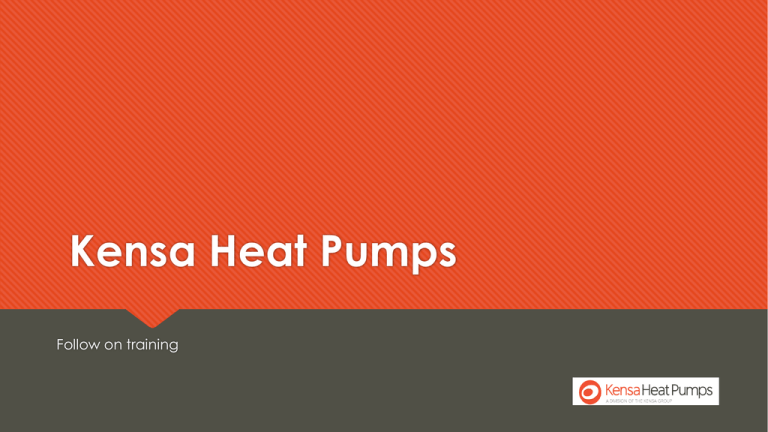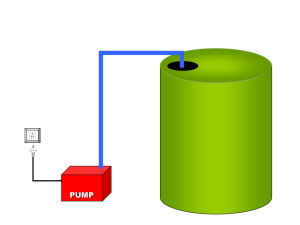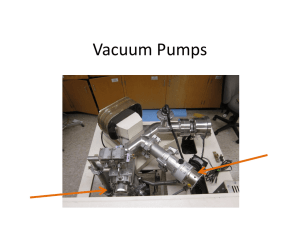File - Kensa Heat Pumps
advertisement

Kensa Heat Pumps Follow on training Agenda Introduction Heat Pump Operation Application Design/MCS/ Pricing Ground Arrays – unrolling and purging Simple diagnostics and fault finding Q&A, product viewing Lunch www.kensaheatpumps.com Heat Pump Cycle www.kensaheatpumps.com 3 Heat Pump Performance www.kensaheatpumps.com The efficiency of a heat pump is mainly governed by the outlet temperature 4 Heat Pump Performance www.kensaheatpumps.com Inlet temperature also can have an affect on COP 5 Heat Pump Efficiency www.kensaheatpumps.com Real-life efficiency is expressed as a SPF (Seasonal Performance Factor) which is a very complex calculation and is influenced by numerous factors quite distinct from the heat pump performance. Kensa’s heat pumps use Copeland scroll compressors, the most advanced available, and capable of providing the best available performance. Branding of the heat pump is not the critical factor in determining performance. Factors linked to the property and the site are far more influential. Ability to highlight the impact of some of these factors is helpful in gaining credibility with the client. 6 6 www.kensaheatpumps.com Domestic Heat Pumps R407C R134a Size Compressor Size Compressor 4kW Single 3.5 kW Single 6kW Single 4.3kW Single 8kW Single 6kW Single 10kW Single 7kW Single 12kW Single 8.5kW Single 12kW Twin 10kW Single 16kW Twin 12kW Twin 20kW Twin 17kW Twin 24kW Twin 20kW Twin 30kW Twin Single Compressor internals www.kensaheatpumps.com Twin Compressor Internals www.kensaheatpumps.com Hybrid Heat Pumps www.kensaheatpumps.com Single Phase Twin Compressor R407C and R134a 15kW and 21kW 10 Shoebox Heat Pumps www.kensaheatpumps.com 11 Plant Room Modules www.kensaheatpumps.com 20 to 75 kW per module. Combinations up to 1 MW and beyond 15 Application Application is critical If a heat pump fails we can fix it, but if the application is wrong........ www.kensaheatpumps.com Application - Exercise Points to consider when installing a GSHP i.e. Type of fuel replacing www.kensaheatpumps.com Application How well insulated is the building? What type of heating? What fuel are we displacing? Floor Construction. Amount of glazing. Noise issues. Available heat source. www.kensaheatpumps.com Insulation www.kensaheatpumps.com The better you insulate your building : The lower the flow temperature required by the underfloor heating system to reach your target temperature Therefore, the less the heat pump has to raise the temperature And the more efficient the heat pump! The better you insulate your building, the more efficiently the heat pump will operate. 19 The better insulated the building www.kensaheatpumps.com Smaller the heat pump required The less the digging/drilling required Lower the capital cost Lower the building’s carbon emissions Lower the energy bill 20 Heating Distribution Methods www.kensaheatpumps.com Underfloor Ideal, large emitting area therefore low input temperatures. Beware floor coverings and method of installation which might require the heat pump to operate at higher temperatures. 21 Heating Distribution Methods www.kensaheatpumps.com Radiators Need a higher temperature than underfloor due to the lower heat emitting area. Might need oversized radiators as maximum temperature from the heat pump is approx. 50C. 22 Mixing radiators and underfloor www.kensaheatpumps.com Some want radiators upstairs, and underfloor downstairs Can this be done? Yes Depending on the floor construction, the temperature required by the radiators can be the same as the underfloor system! There is a delay between the radiators and underfloor feeling warm. Zone valves are generally required. 23 DHW Production www.kensaheatpumps.com 25 Secondary Returns www.kensaheatpumps.com Standard secondary returns cause the cylinder temperature to drop and due to the low temperature nature of heat pumps this temperature drop cannot be recovered 26 www.kensaheatpumps.com DHW Cylinders Single or Twin Coils (Coil designed and sized for Heat Pump applications) 3kW Immersion Heater Expansion Vessel G3 Kit Stainless Steel tanks guaranteed for 25 years against leaks. 27 Inverted houses www.kensaheatpumps.com Bedrooms downstairs, living area upstairs. Depends on floor construction. Might need to run at higher temperatures and standard rate electricity. Glazing www.kensaheatpumps.com Beware high areas of glazing. (even triple glazing only retains 1/3rd of the heat a solid wall does) Will be cool in winter when cold ambient conditions. Additional heating such as log burners. Noise Issues Keep the heat pump away from noise sensitive areas. Similar noise to an oil fired boiler or running dishwasher. Can install external to the building at the back of a garage or in a lean to. www.kensaheatpumps.com Buffer Vessels www.kensaheatpumps.com Fitted to avoid short-cycling, i.e. which is where the heat generated during the minimum run time for the heating appliance (usually several minutes) cannot be absorbed by the buildings distribution system. Buffer Vessels www.kensaheatpumps.com 2 connection buffer vessels are more efficient If close control of all temperature zones is not required then ‘open’ zones of the underfloor can be used as the buffer vessel. www.kensaheatpumps.com Project Example – Sizing The Heat Pump New Build Four Bedroom Detached Property with Garage 33 Sizing www.kensaheatpumps.com Internal area – Ground Floor & First Floor Total Internal area = 224.6m2 Heat load = 224.6 x 40w/m (If New Build) = 8984 = 8.98 kW 34 Budget Pricing www.kensaheatpumps.com Budget Pricing www.kensaheatpumps.com SAP sizing – Line 37! SAP Report - Line 37 Heat Loss Coefficient x Temperature Difference -2°C (Min) to 21°C (Max) = 23°C rise 378.45 x 23 = 8704W = 10kW (39W/m) www.kensaheatpumps.com











